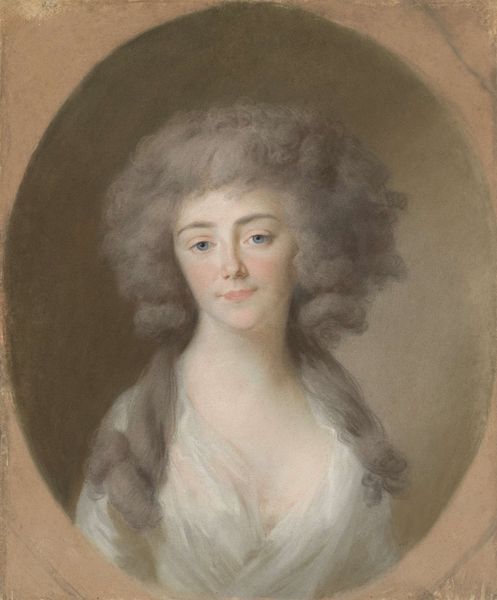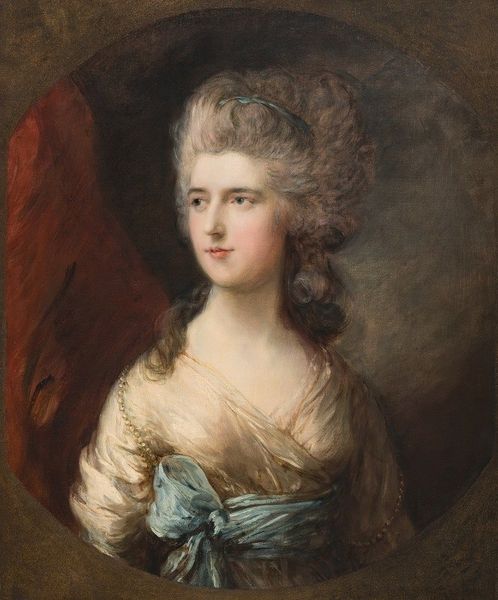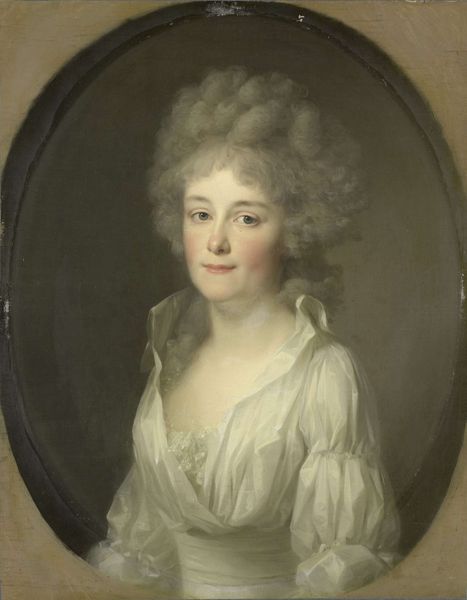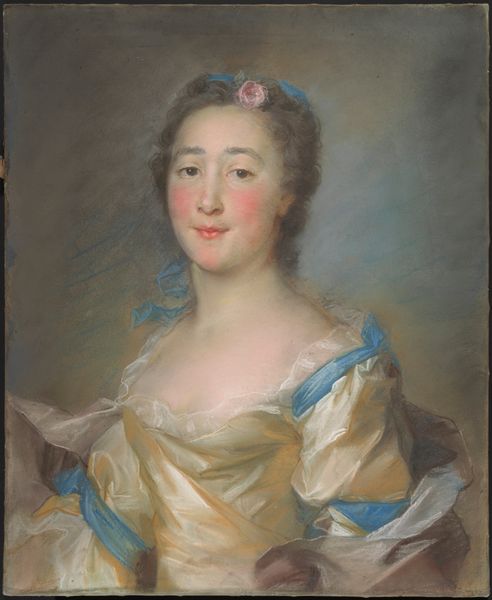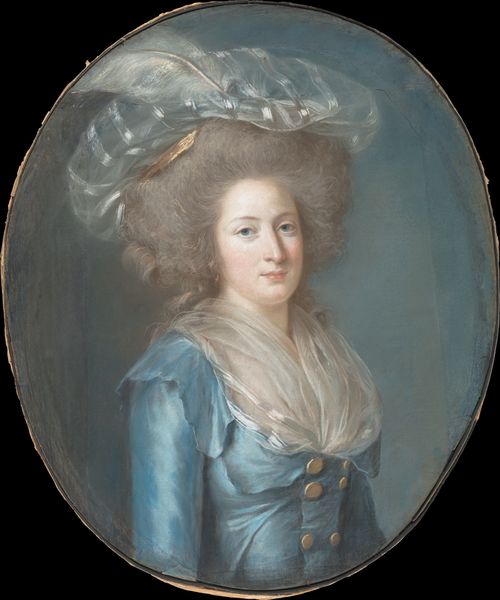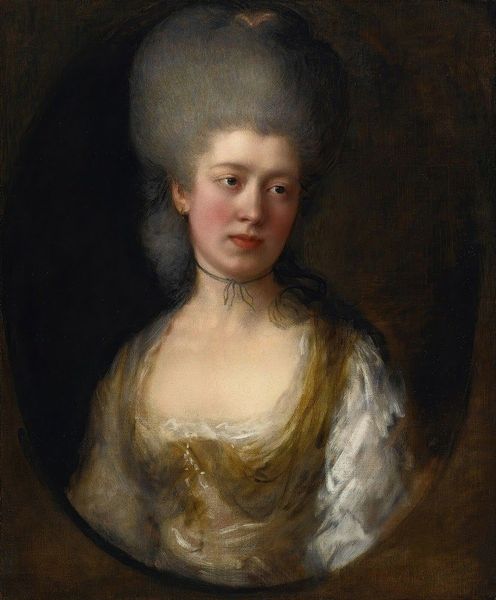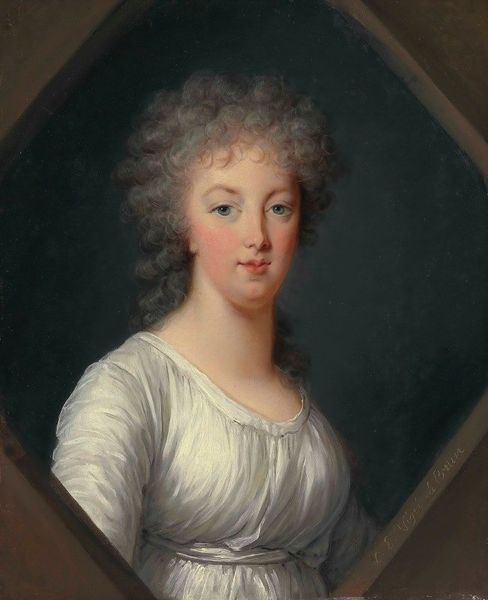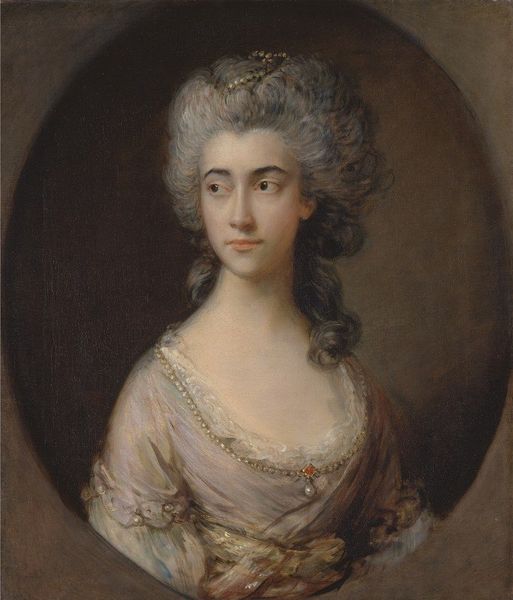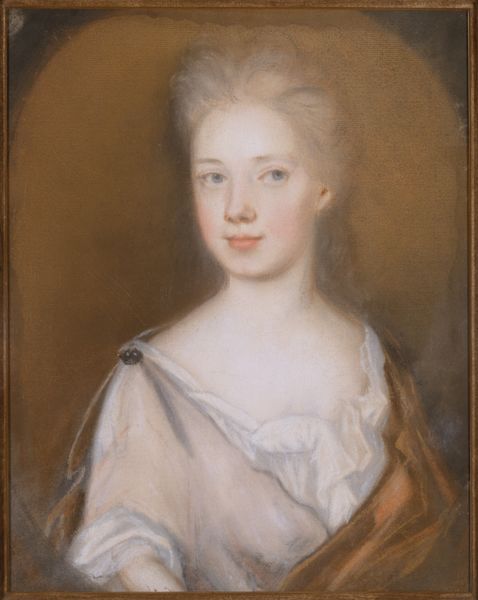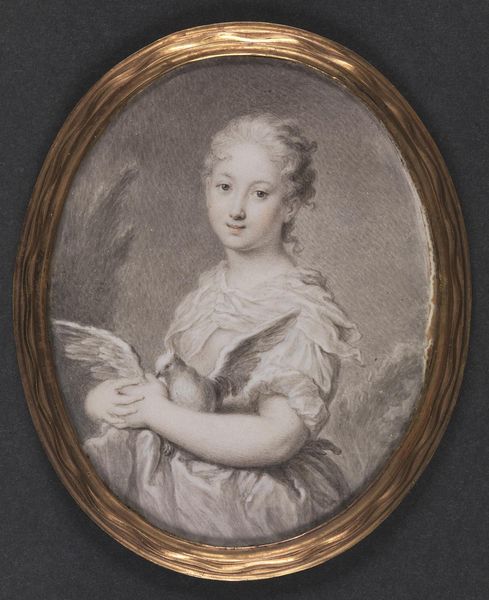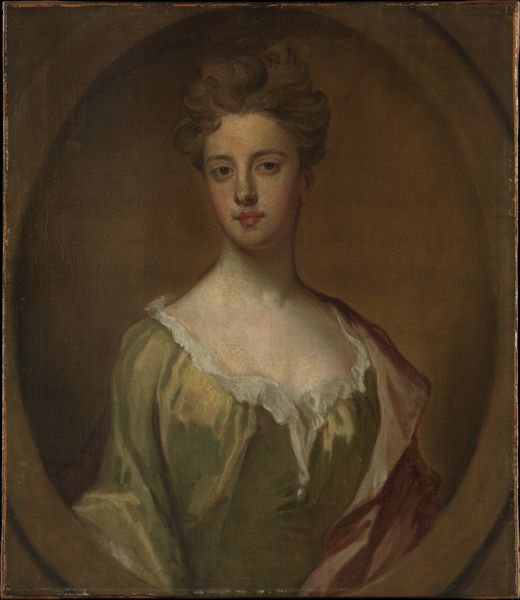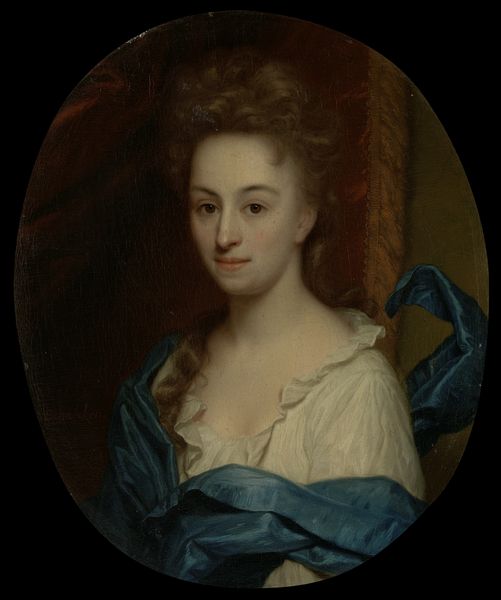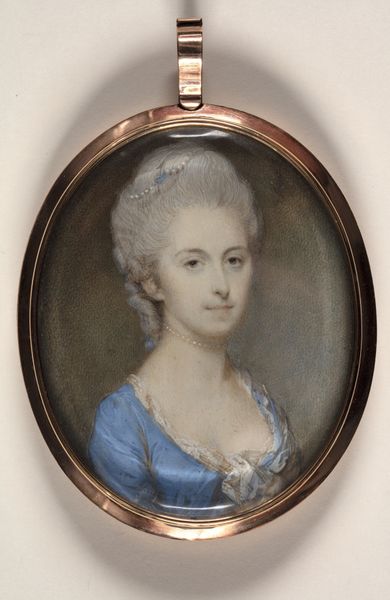
Dimensions: 695 mm (height) x 550 mm (width) (bladmaal)
Editor: This is Jean-Baptiste Perronneau’s “Portrait of a Lady,” made in 1777 with pastel on paper. She looks rather dreamy. What do you see in this piece? Curator: Immediately, the symbolic weight of the Rococo period floods in: that powdered hair, the delicate blue shawl. Notice how her gaze avoids ours, as if caught in a private reverie. In visual terms, the oval format and the soft pastel medium serve to isolate her in a sphere of privilege. How does her aloofness strike you? Editor: It's interesting; I thought it was just a standard pose for the time, but her eyes do give a sense of distance. Curator: Precisely! The painting uses conventions but seems to push beyond them, doesn't it? The lightness, a conventional approach to female portraiture at the time, speaks volumes. Lightness, frivolity, daintiness--all these contribute to her depiction and create a symbol. It makes us wonder: how much control did women really have? Editor: That makes me think about the later backlash against this style, during the French Revolution. Curator: Indeed! This painting foreshadows the upheaval of those symbols of aristocracy. You begin to see how one image can encapsulate and then shatter a whole worldview, and create symbols for a different ideology. Editor: I had not considered all the symbolic elements packed within what seems like a gentle, simple portrait. It really encourages me to look more intently at what I see, and not what I expect to see. Curator: Wonderful! Art gives us this lens. The "Portrait of a Lady" reveals that the personal, particularly in art, is indeed deeply political.
Comments
No comments
Be the first to comment and join the conversation on the ultimate creative platform.

